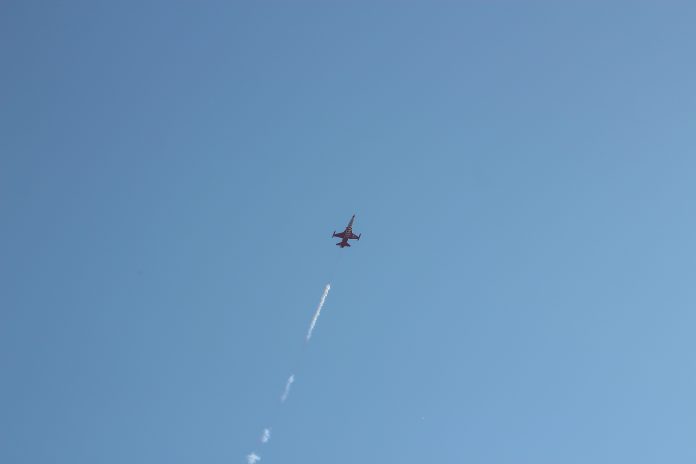Professor Kristi A. Morgansen, University of Washington, explores the potential of using sensing technology in the next generation of flight
Given the pervasive presence of flight systems in current society, one can easily forget that the first demonstrations of powered flight vehicles occurred only a little more than a century ago in the early 1900s by Whitehead and the Wright brothers.
Once the key scientific and engineering developments were achieved, flight system quickly evolved from futuristic ventures of questionable viability to essential capabilities that touch all aspects of advanced modern society. Aviation now directly engages a workforce of 11.3 million people globally with a further 31.1 million induced and indirect jobs(1) and enables mass human transportation, military defence and force projection, emergency response, and commercial support of agriculture, supply chain, wildlife protection, photography, communication and more.
What is needed for the ongoing second century of next-generation flight systems to support societal, environmental, and economic needs? Individual flight vehicles are, broadly speaking, comprised of a few key elements: the airframe; the propulsion and power systems; and the avionics systems. In the remainder of this article, we will focus specifically on the component of avionics that is the sensors that support flight vehicles and their operation.
Modern flight systems – aircraft, infrastructure, and efficiency
The needs of current and developing flight systems reflect a diversity of applications and domains. These systems comprise not only the aircraft themselves, but the supporting infrastructure for their design, manufacture, operation, and maintenance. Further, the viability of aviation operations relies heavily on operational efficiency – all costs are constantly examined for improvement, and significant improvements are enabled by technological advances. At the same time, innovation is often compared to the capabilities of biological flight, which is regularly held up as the ultimate standard, against which we still fall far short.
To achieve desired operational capabilities, and to do so with maximal efficiency, a common requirement within and between each of these elements is information. The types of information needed, the frequency at which the information must be updated, and the necessary accuracy of the information are determined by the specific application.
All flight vehicles, including commercial transportation, military fighter jets, freight transportation, rotorcraft, and uncrewed aerial vehicles (UAVs, often termed drones) of all sizes have tight operational specifications to satisfy the safety-critical nature of their use. To obtain the needed information to meet design and operational requirements, appropriate types and quantities of sensors are needed in appropriate physical locations.
Systems and performance must be monitored as part of the design and testing of vehicles to verify and validate expected operation and satisfaction of design criteria. During manufacturing, components must be produced and assembled to specification. In operation, vast amounts of in-flight and on-ground data are produced and processed to inform maintenance needs. As part of ongoing maintenance, the full history of vehicle data may be needed to determine service requirements or new design requests.
The spectrum of flight sensors
The operational uses that sensors must support typically include navigation (the physical location of a vehicle and the location of nearby objects), onboard system health of all equipment (e.g., engines, fuel use, hydraulic and pneumatic systems, landing gear, control surfaces, etc.), environmental support systems for passengers and cargo, ground support logistics, pilot performance, and more. The economic market for aircraft sensors was on the order of $3.8B in 2019 and expected to grow to $4.9B in 2025 at a rate of 4.48%.(2)
The types of sensors employed in flight systems range from simple to complex. A large aircraft may easily have tens of thousands of total sensors. Simple sensors (e.g., current, strain, displacement, voltage) generally require less processing, and data can be updated and processed more quickly. However, the data are basic and single-dimensional. More complex sensors, such as GPS, vision, and gyroscopes, present challenges with precise manufacturing, operation, and data processing, but while the data are typically slower to update than simple sensors, the information is richer.
The data from all sensors must be processed to remove the effects of noise as much as possible.(3) To have the most accurate and precise information, data from multiple sensors and multiple types of sensors are often combined in a process termed sensor fusion. For example, sensing technology that updates more quickly, such as strain gages may be integrated with slower more accurate sensing from inertial measurement units (IMUs) to produce structural vibration information.
As the number of sensors and the scope of their distribution in an aircraft increases, the transfer of information to computers for processing becomes more complex. Significant attention is given to routing and shielding the wiring for sensors and actuators through an aircraft frame. During the past several years, the increasing use of wireless sensors has been incorporated into aircraft. However, while wireless transmission decreases the mass of wiring needed and the servicing thereof, the materials of aircraft structures can impede the signals, increase the noise in the measurements, and require attention to signal security to prevent hacking.
Filtering the volume of sensor data
From the most complex to the simplest of flight vehicles and operations, raw sensor data requires processing. At a high level, the more responsive a system is, the faster the sensor systems must provide data. All sensor data is noisy, and from the noisy data, the best estimate of the actual information must be obtained. This processing is typically handled by computer algorithms. Flight systems typically have redundant sensing systems whose output is continuously compared to check for errors or corrupted data. Processing all the data in a large or high-performance aircraft requires extensive computational capabilities and sensing technology.(4)
Even in the modern era of super-computing, the human ability to make inferences from data in dynamic and uncertain situations vastly outperforms computing-based systems such as artificial intelligence, machine learning or autonomy. However, the speed at which computing can operate, particularly with large volumes of information is well beyond human capabilities. The challenge is finding a balance that provides the quality of information needed at the speed it is needed.
The future of flight sensing
The need for real-time, complex and curated information will continue to expand as the vision of desired capabilities for flight vehicles evolves. Sensor and data processing capabilities coupled with the physical structures of aircraft and the people who design, build, operate and fly in them will continue to become more tightly integrated. Given the achieved growth of flight technology in the past century, and with the expected ongoing government and industry investment we can expect an amazing next century of innovation and ingenuity.
(1) Aviation Transport Action Groupe (ATAG), “Aviation Benefits Beyond Borders”, September 2020, https://aviationbenefits.org/media/167186/abbb2020_full.pdf
(2) https://www.fierceelectronics.com/components/aircraft-sensors-market-cruising-skyward
(3) J.S. Litt, D.L. Simon, S. Garg, T.H. Guo, C. Mercer, R. Millar,
A. Behbahani, A. Bajwa, and D.T. Jensen, “A survey of intelligent control and health management technologies for aircraft propulsion systems,” Journal of Aerospace Computing,
Information, and Communication. 2004 Dec;1(12):543-63.
(4) S. L. Brunton, J. N. Kutz, k. Manohar, A. Y. Aravkin,
K. Morgansen, J. Klemisch, N. Goebel, J. Buttrick, J. Poskin,
A. W. Blom-Schieber, T. Hogan, and D. McDonald, “Data-Driven Aerospace Engineering: Reframing the Industry with Machine Learning,” AIAA Journal, in press.
Please note: This is a commercial profile
© 2019. This work is licensed under CC-BY-NC-ND.











